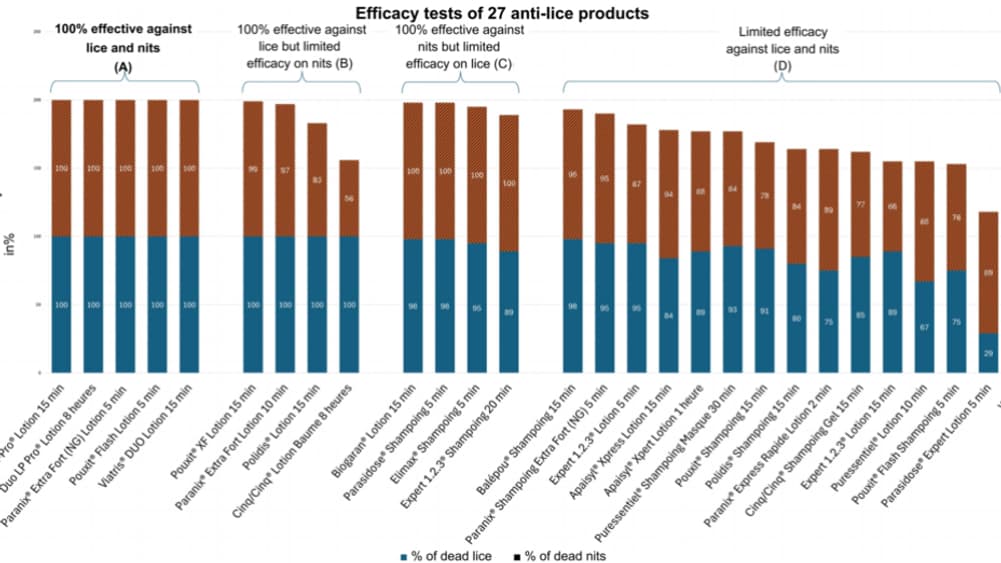The majority of anti-lice treatments sold in France deemed ineffective

It's one of parents' nightmares: lice . Often returning at the start of each school year, these parasitic insects are particularly tough. And the products found in stores to get rid of them aren't all that helpful, according to a study spotted by Le Quotidien du Pharmacien , based on products sold in France in 2024.
According to the study published on June 23 in the Cureus Journal of Medical Science , only five controlled products have a theoretical efficacy of 100% on lice and nits, the parasite's eggs that look like grains of sand on the scalp.
"The results of this study highlight several concerns about the effectiveness of anti-lice treatments currently available on the French market," the authors write.
When it comes to the most effective products, the molecules used vary. Déparaz-pro works with a crystallizing agent, while others use vegetable or mineral oils ("Duo LP Pro", "Paranix Extra Fort") or silicones ("Pouxit Flash", "Viatris Duo").
These products, which kill the parasite and its eggs, are the most effective. But they are far from being the best-selling, representing only 27% of French purchases, for a market worth around 20 million euros.
Other products are partially effective. Thus, eight products are very effective against lice but not against nits ("Pouxit XF Lotion 15 min", "Paranix Extra Fort lotion 10 min", etc.) or conversely effective against nits but not lice ("Biogaran Lotion 15 min", "Parasidose shampoo 15 min", etc.).

Finally, for 14 products, the theoretical effectiveness against both stages of the parasite is partial or very poor. The worst product according to this study: Parasidose Expert Lotion 5 min, which only eliminates 29% of lice. Yet a paradox emerges: these ineffective products are also... the best-selling. More than one in two products purchased is on the list of the least effective.
"It can be considered that the products tested, which are not 100% effective against lice and nits, may not cure pediculosis (lice infestation, editor's note), since a single live female or two to three viable eggs can give birth to a new generation," the authors note.
They also question the "marketing strategies" of the manufacturers of these products, who advertise efficacy rates that "may mislead users." The instructions provided are reportedly unclear, such as the number of uses required or the protocol to follow.
"Some packages promise a cure in minutes, but these treatments are often combined with combing or require reapplication on day 7 or multiple shampoos," they cite as examples.
For several health and environmental reasons, the study's authors urge manufacturers and public authorities to increase controls. French health authorities are therefore recommended to "conduct rigorous efficacy assessments before approving new treatments."
BFM TV





